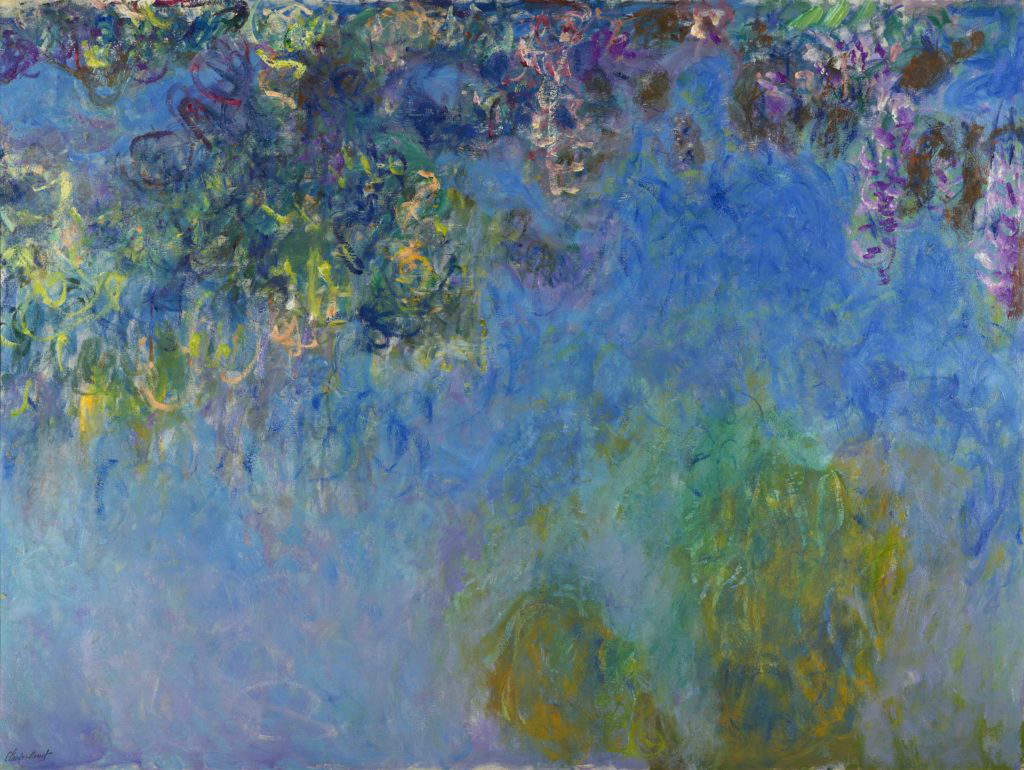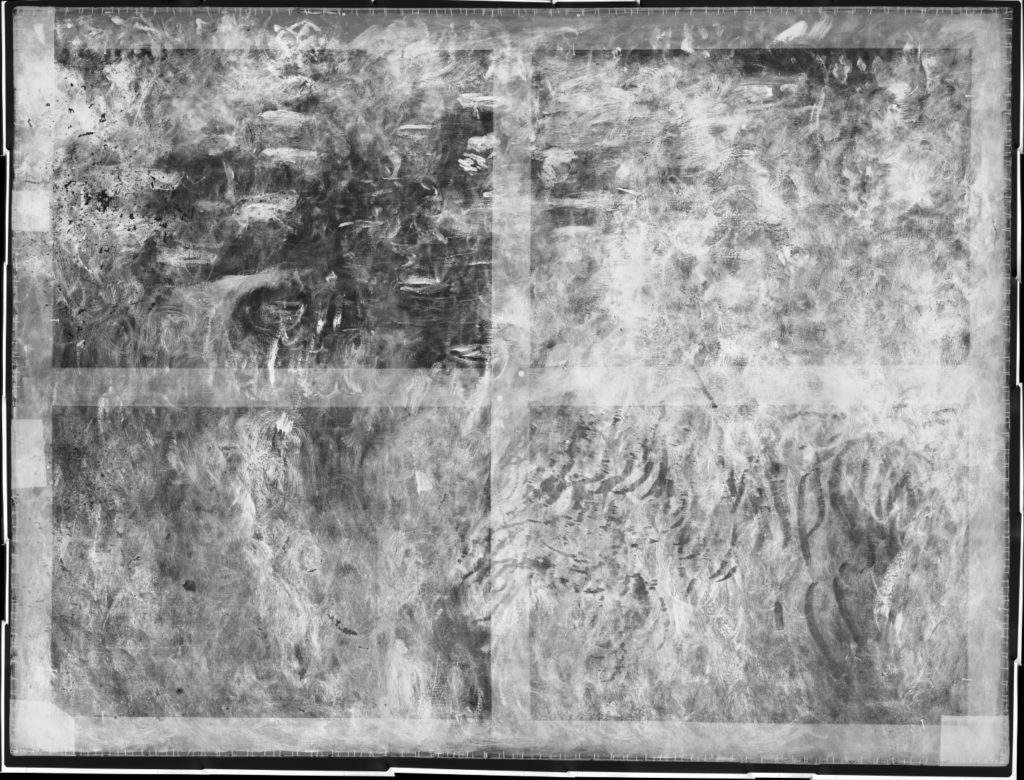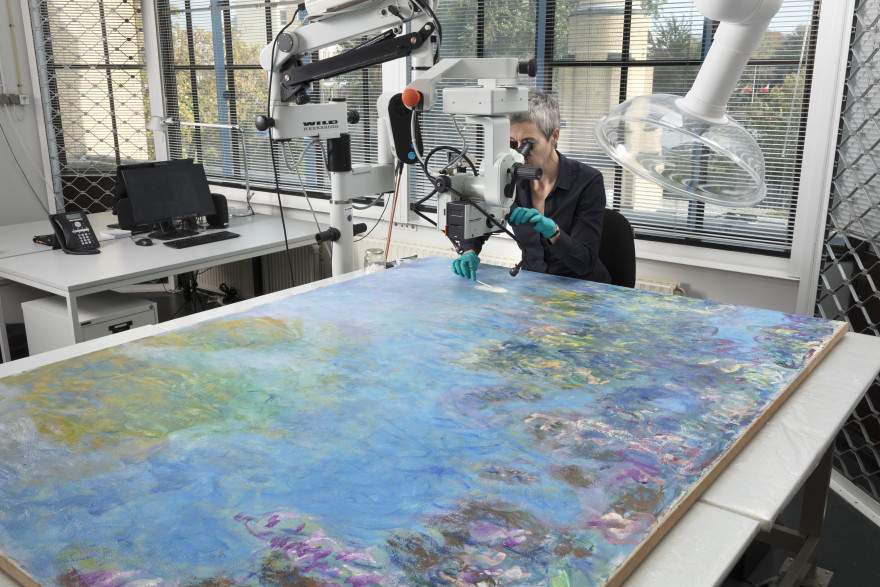An unknown version of Claude Monet's Water Lilies has been discovered in the Netherlands.
A major discovery in the history ofImpressionism: a previously unknown version of the Water Lilies by Claude Monet (Paris, 1840 - Giverny, 1926) has emerged in the Netherlands. Author of the discovery is Ruth Hoppe, a conservator at the Gemeentemuseum in The Hague, one of the most important museums in the Netherlands, which houses a significant collection of modern art, where the world’s largest collection of works by Piet Mondrian is also included. The expert reported (the news is also available on the museum’s website) that the version of Monet’s famous painting was discovered under a work by the same artist, a canvas depicting wisteria flowers. The discovery was made through X-rays taken of the painting, which had never undergone restoration.
In fact, the work, which belongs to the late phase of Monet’s career (dating from 1917-1920), needed work before the exhibition Monet. The garden paintings (Oct. 12, 2019 to Feb. 2, 2020), where the Wisteria will be featured along with other works by the father of Impressionism on the theme of the garden (as is well known, Monet was a great gardening enthusiast, and when he had the chance he created around his house in Giverny a wonderful and lush garden, which still exists and can be visited today). The exhibition will be the first in the Netherlands devoted to this strand of Monet’s production.For the occasion, the painting had a layer of varnish added after Monet’s death removed, further subsequent retouching was arranged, and the work underwent a protective intervention. The work still bore the mark of damage that probably occurred during World War II, following the collapse of the glass covers of Monet’s studio: glass shards had struck the work causing small holes, which were repainted as best as possible in later years. On the resulting repainting no one had so far intervened.
 |
| Claude Monet, Wisteria (1917-1920; oil on canvas, 150.5 x 200.5 cm; The Hague, Gemeentemuseum) |
 |
| The x-ray of the work: Monet’s water lilies are visible. |
However, Hoppe confessed that she never expected to find a group of water lilies through radiographic investigation. The Wisteria in the possession of the Hague Municipal Museum (where they entered in 1961 following a purchase from Swiss dealer Ernst Beyeler) “are already a special work in themselves, as there are only seven in the world,” Hoppe explained, “but water lilies are an iconic theme in Monet’s art, and the fact that they are under his wisteria makes our canvas even more special.” In the X-ray, the water lilies are clearly distinguishable. And the discovery has important implications in understanding Monet’s work. It might suggest (this at least according to the exhibition’s curator, Frouke van Dijke) that the Gemeentemuseum’s Wisteria are the first version of the series, and that the painter began working on the wisteria just after the water lilies, experimenting with new compositions. “In my perhaps somewhat romantic view of Monet’s art,” Hoppe said, “the artist may have woken up one day and decided he was ready for something other than water lilies. I can see him heading to his studio, taking a previously made water lily canvas, scraping off parts of the old painting and trying to correct the old composition to paint a new theme.” He dampens van Dijke’s enthusiasm somewhat by saying that, however, “we will never know for sure.”
The results of the research (and the restored painting) will therefore be officially presented at the exhibition on Claude Monet’s “garden paintings” opening at the Gemeentemuseum on October 12. And a large influx of visitors is certainly expected.
Pictured below: restorer Ruth Hoppe at work on Monet’s Wisteria. Photo by Gerrit Schreurs.
 |
| An unknown version of Claude Monet's Water Lilies has been discovered in the Netherlands. |
Warning: the translation into English of the original Italian article was created using automatic tools. We undertake to review all articles, but we do not guarantee the total absence of inaccuracies in the translation due to the program. You can find the original by clicking on the ITA button. If you find any mistake,please contact us.




























